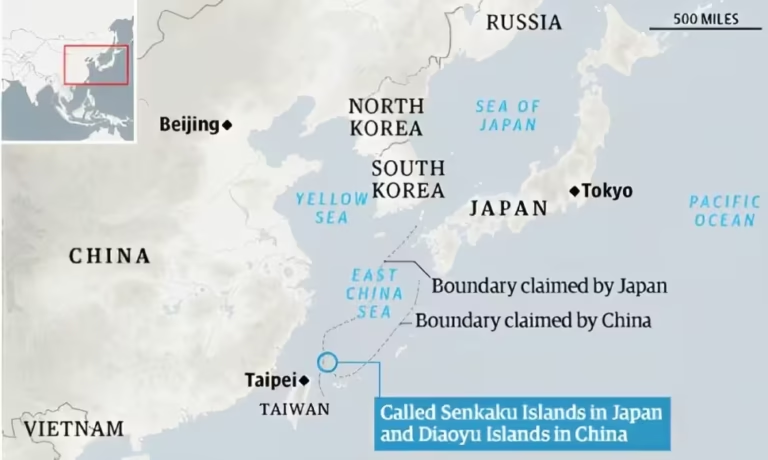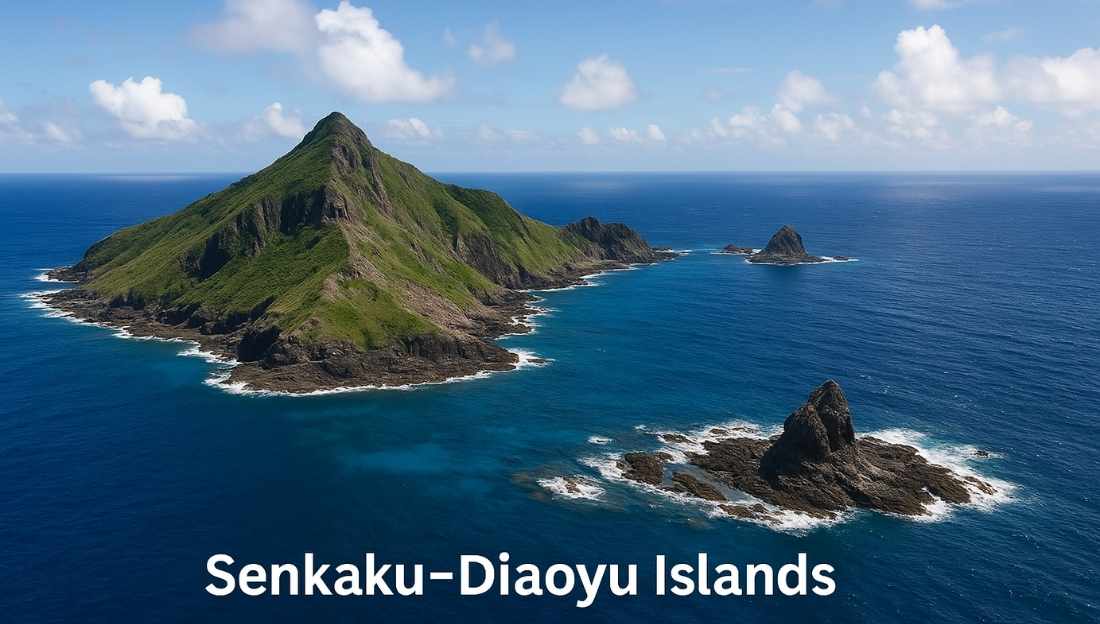China recently sent its Coast Guard to patrol waters near the disputed Senkaku Islands, heightening tensions with Japan, especially following Tokyo’s latest remarks supporting Taiwan.
About the Senkaku–Diaoyu Islands:
- Location & Status: A cluster of uninhabited islands in the East China Sea, claimed by Japan, China, and Taiwan.
- Different Names: Senkaku (Japan), Diaoyu (China), Diaoyutai (Taiwan).
- Administration: Controlled by Japan since 1972 after the Okinawa Reversion Treaty with the U.S.
- Geography: Five islands and three rocks, covering around 7 sq km, largest being Uotsuri.
- Strategic Importance: Near major global shipping routes, making it vital for maritime trade and military presence.
- Natural Resources: Believed to have potential oil and gas reserves, highlighted by a 1969 UN study.
- Fishing Zone: Surrounding waters are rich in marine and fisheries resources.
- Geopolitics: The islands lie at the crossroads of China, Japan, Taiwan, and involve the U.S. security alliance, making it a key Indo-Pacific hotspot.

Nature of the Dispute:
- The GI tag was granted by the Geographical Indications Registry, Ministry of Commerce and Industry.
- The recognition highlights the marble’s exceptional purity, global reputation, and traditional mining practices.
- Ambaji marble competes in quality with renowned stones used in monuments like the Taj Mahal.
Significance of the GI Tag
- Protects the product from imitation and boosts the local economy.
- Enhances market value and strengthens the marble’s identity in national and global markets.
- Supports artisans and quarry workers through demand generation.
- Helps preserve India’s cultural and geological heritage.
Important GI tags from Gujarat
- Patola of Patan – World-famous double ikat silk weave, extremely rare and costly.
- Gir Kesar Mango – Premium saffron-coloured mango from Junagadh.
- Kutch Embroidery – Traditional hand embroidery with mirror work.
- Bandhani (Kutch & Jamnagar) – Signature tie-and-dye textile art.
Conclusion
The GI recognition for Ambaji marble protects a historically significant natural resource and promotes regional development. It strengthens India’s broader GI ecosystem and supports traditional industries.
This topic is available in detail on our main website.





